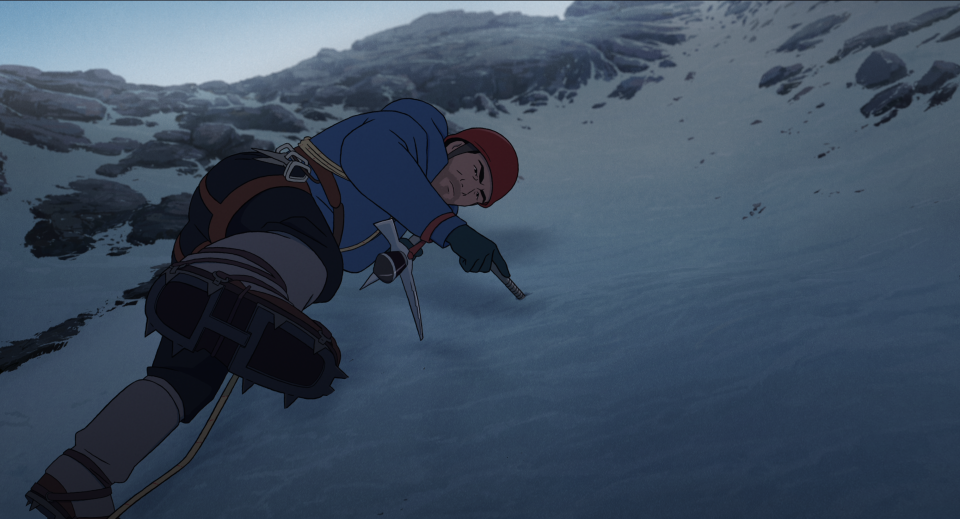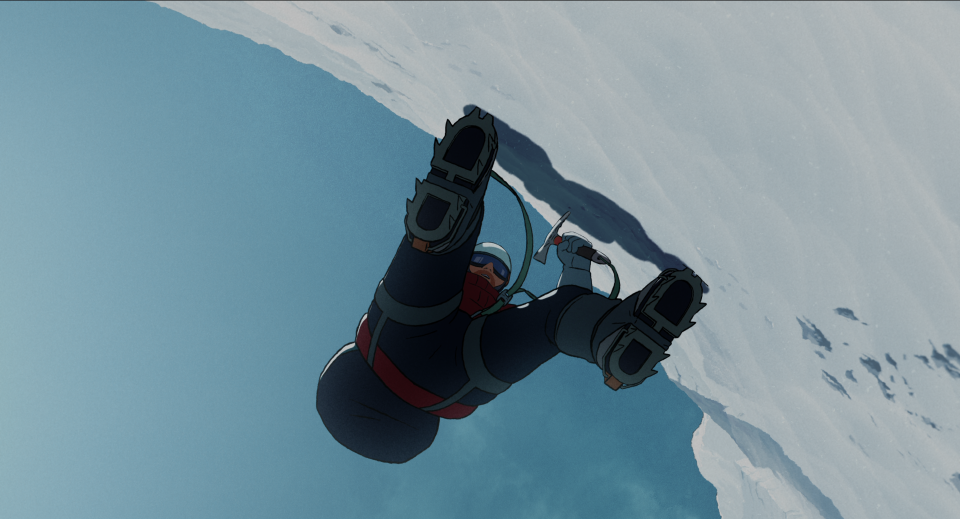‘The Summit of the Gods’: Reaching New Animated Heights by Climbing Mount Everest

- Oops!Something went wrong.Please try again later.
Netflix’s “The Summit of the Gods” (opening November 24 in select theaters and streaming November 30) accomplishes something new and immersive in 2D animation: the beauty, excitement, and danger of scaling Mount Everest. However, for French director Patrick Imbert (“The Big Bad Fox and Other Tales”), this was not about soaring new heights in animation, but exploring the obsession with mountain climbing.
“You use the tools that you bring with telling a movie story,” said Imbert, a former animation supervisor who teamed up with producers Didier Brunner (“Ernest & Celestine,” “The Triplets of Belleville”), Damien Brunner, Jean-Charles Ostorero (who co-scripted), and Stéphan Roelants. “And that’s why we use image, sound design, and music [by Amine Bouhafa] to create something that doesn’t exist outside. Of course, I know and love some animation a lot, but most of my influences are live-action movies. For example, [Stanley] Kubrick’s ‘Barry Lyndon.’ One thing I learned is that many different things happen to that character, and if the film stops at one hour, you will learn something; and if it stops at one hour and a half, you will learn something else. And what you [learn] at the end of the movie is the [accumulation] of many, many things, so take your time.”
More from IndieWire
New Movies: Release Calendar for November 24, Plus Where to Watch the Latest Films
'Don't Look Up' Has DiCaprio and Lawrence Star Power, but Is It Too Funny for Oscars?
“The Summit of the Gods,” adapted from the acclaimed manga by Jirô Taniguchi and Baku Yumemakura, concerns the kinship between photojournalist and climbing enthusiast Fukamachi and reclusive mountaineer Habu. When Fukamachi realizes that Habu has in his possession the little Vestpocket Kodak camera that belonged to George Mallory and his companion Andrew Irvine — the first men to scale Everest in 1924 — he becomes obsessed with tracking him down to discover the truth about Mallory’s expedition. He soon realizes that Habu has planned one last attempt at conquering the southwest face of Everest, and intends to accompany him to photograph the quest.

Netflix
Since Imbert wasn’t interested in the deeper, more spiritual meaning of conquering Everest, he focused on the obsession: ” My thing is why you do the thing you do,” he said. “And these two guys climb mountains. It’s very difficult, it’s dangerous, nobody asks them to do this. But they are [drawn] to it. And I draw. And if you ask me why, I don’t have any answer. It’s what I do. This is the way I live. So I used this to give an axis to the movie. Every little detail is built toward that question.”
But the director was on much firmer ground exploring the relationship between Fukamachi and Habu. “This is a weird relationship because they are not really friends,” Imbert continued. “Fukamachi knows [about] Habu, but Habu doesn’t know Fukamachi and doesn’t really care about him. At first, he doesn’t want Fukamachi to follow him, but he can see that Fukamachi has a real obsession to follow him. When he reaches the base camp, Habu is waiting for him so he also recognizes the obsession he has himself and their similarity. And, also, Habu [has a tragic past with a young boy who died during a climb] and that’s the other side of the relationship. He feels guilty and [wants to protect Fukamachi] when they are bound together by a rope on that mountain.”

Netflix
Imbert and the producers invited mountain climbing experts to help them achieve authenticity in every detail, which they translated into the 2D animation (divided between two studios in France and one in Luxembourg). They first compiled a multitude of drawings with a distinct graphic style suitable to the hand-drawn technique. Yet immersion in 2D proved a challenge. “We worked a lot on the atmospherics [the wind, the snow, the breathing],” said Imbert. “We had to convey this progression during the three-day climb, which takes up a third of the movie, and the color script helped. The details and textures were important: I wanted to have depth, but it is 2D animation so it is flat.
“How to do this? We used many things: the composition of the drawings you have to manage well and balance the foregrounds and the backgrounds. And you have to use the color of the lights, and so this is done in the background paintings, but also in the compositing stage. And there is a lot of work on the sound design: the wind, the steps in the snow, the glaciers that are cracking, the avalanche. I talk to a lot of senses at the same time.”
In the end, Imbert came away with a greater appreciation of the mountain climbing obsession, though he admitted: “I think these guys are crazy. I think in some way it’s the same with the creative process. The competitive aspect is something I treat in the movie, but little by little Habu doesn’t care anymore about it. The main thing is that everybody has his own obsession. This is the only way to live.”
Best of IndieWire
New Movies: Release Calendar for November 24, Plus Where to Watch the Latest Films
'French Dispatch' and 'Last Night in Soho' Start to Lift Stagnant Specialty Box Office
Sign up for Indiewire's Newsletter. For the latest news, follow us on Facebook, Twitter, and Instagram.


